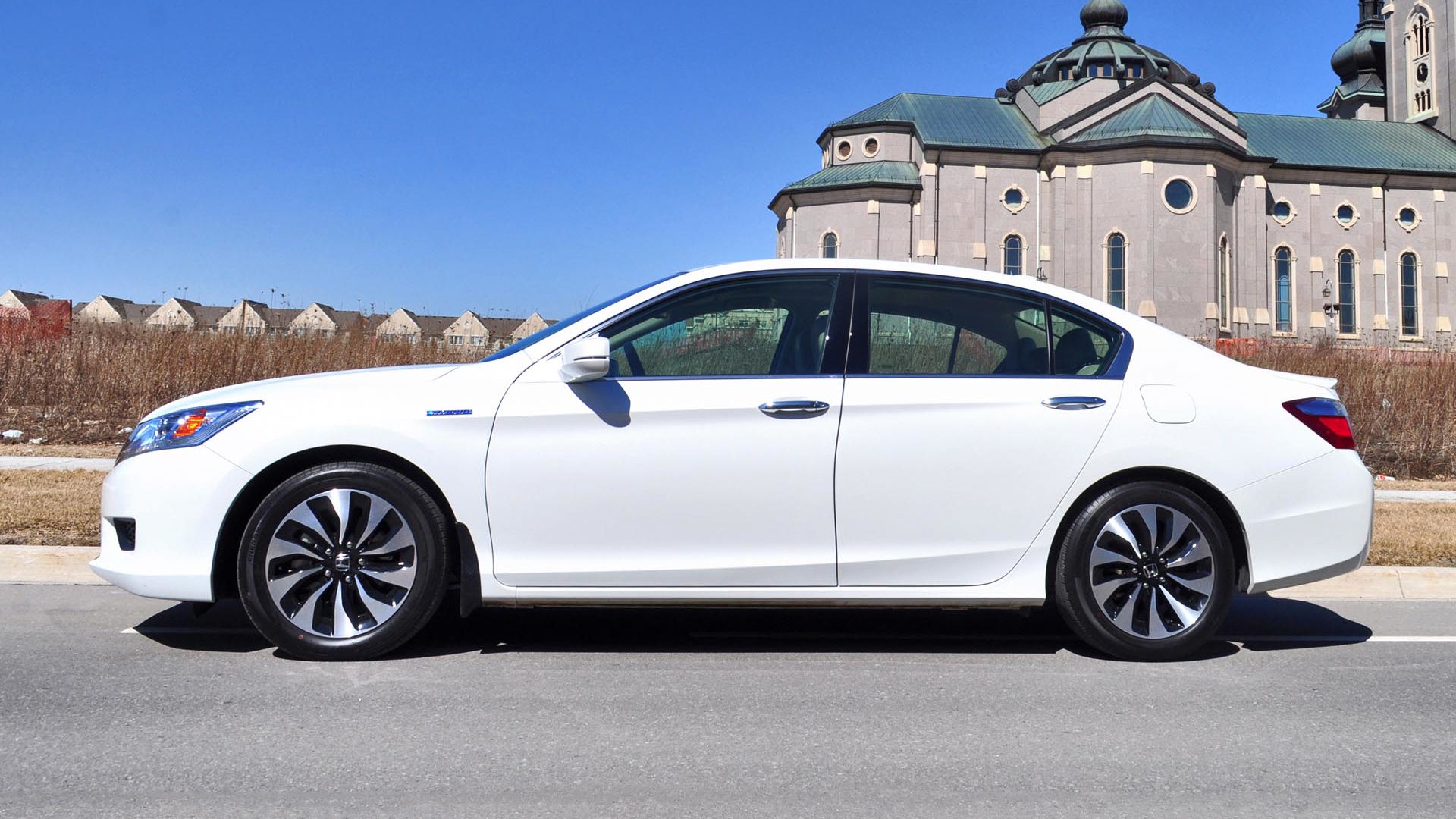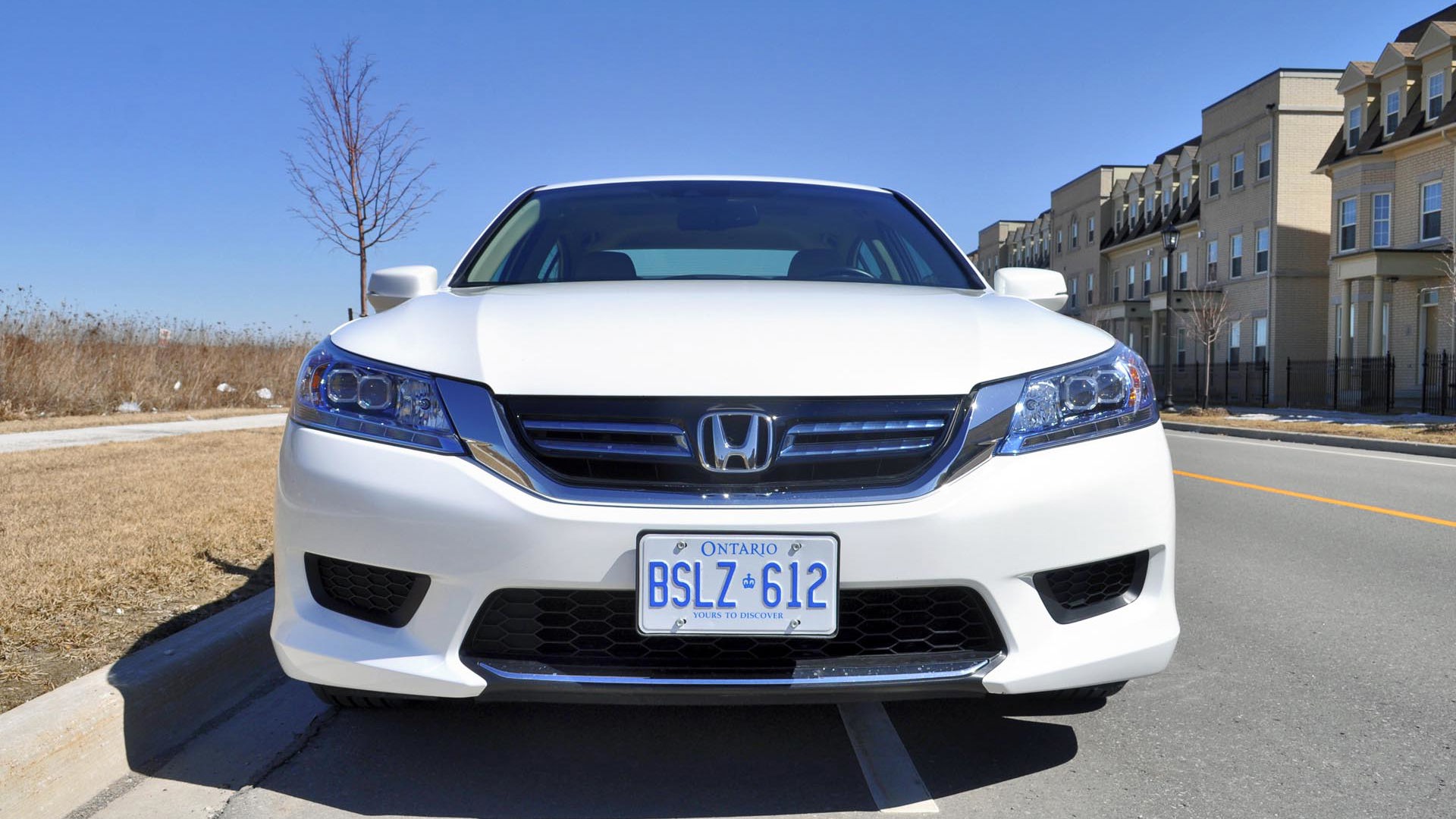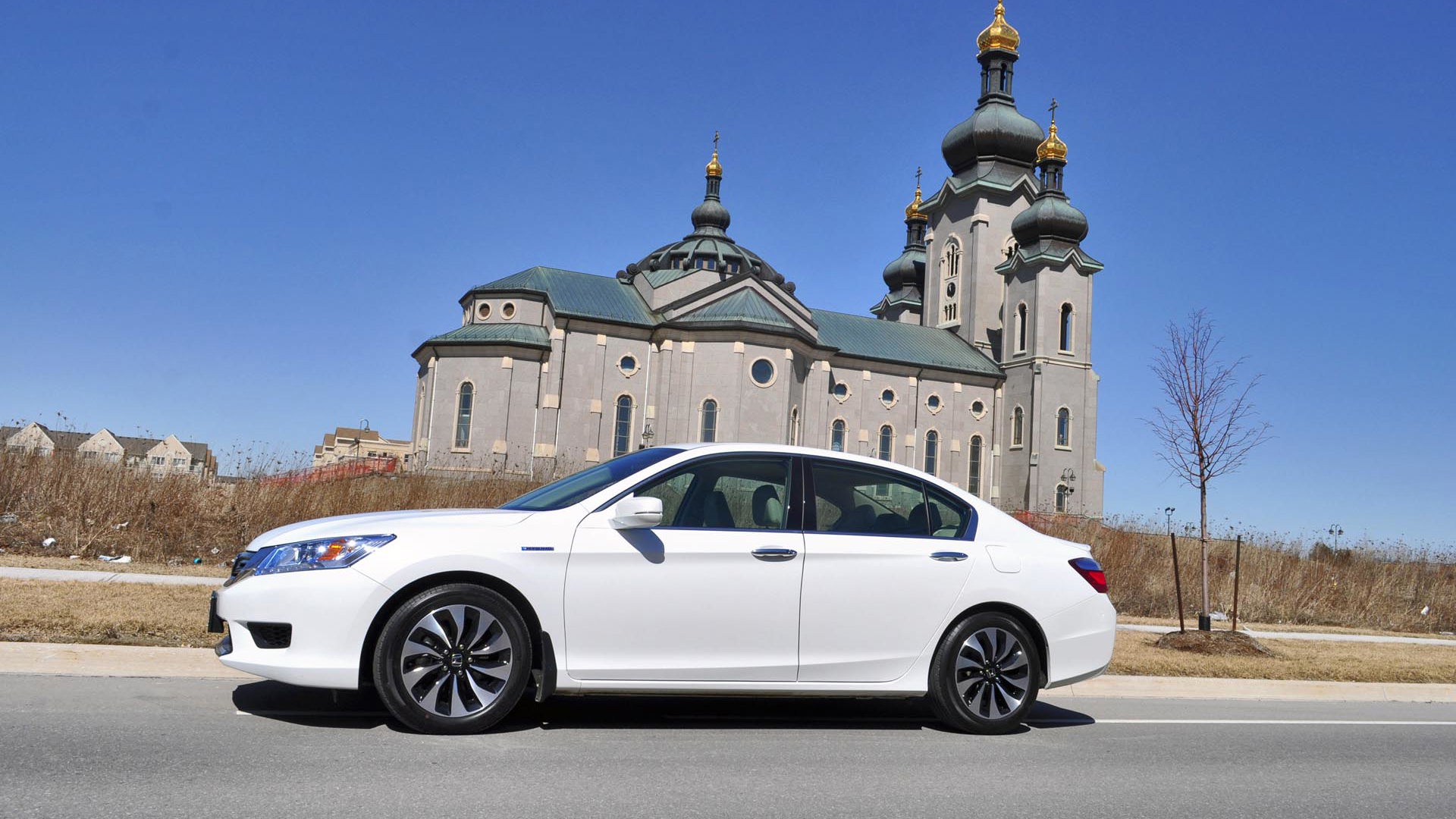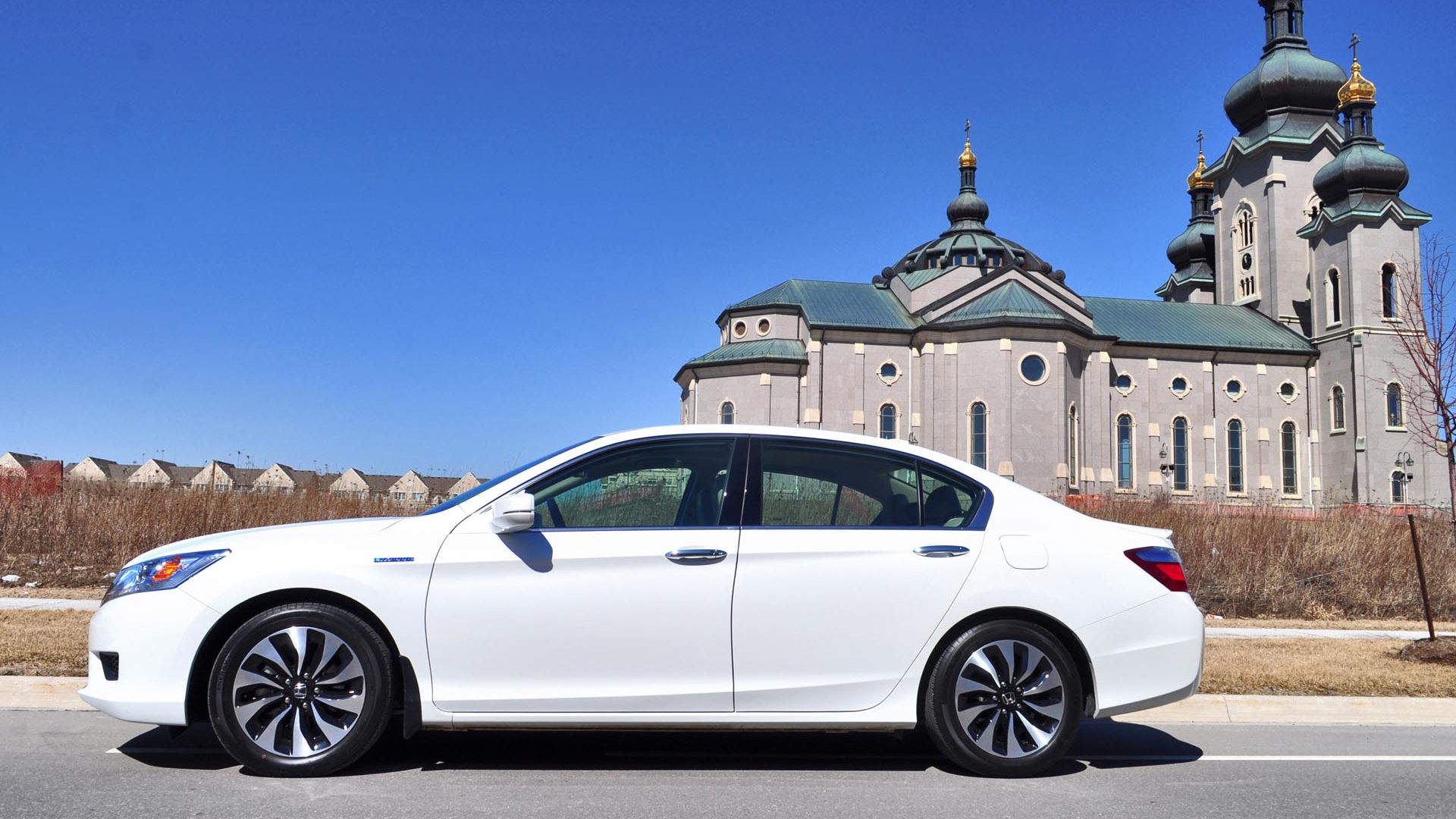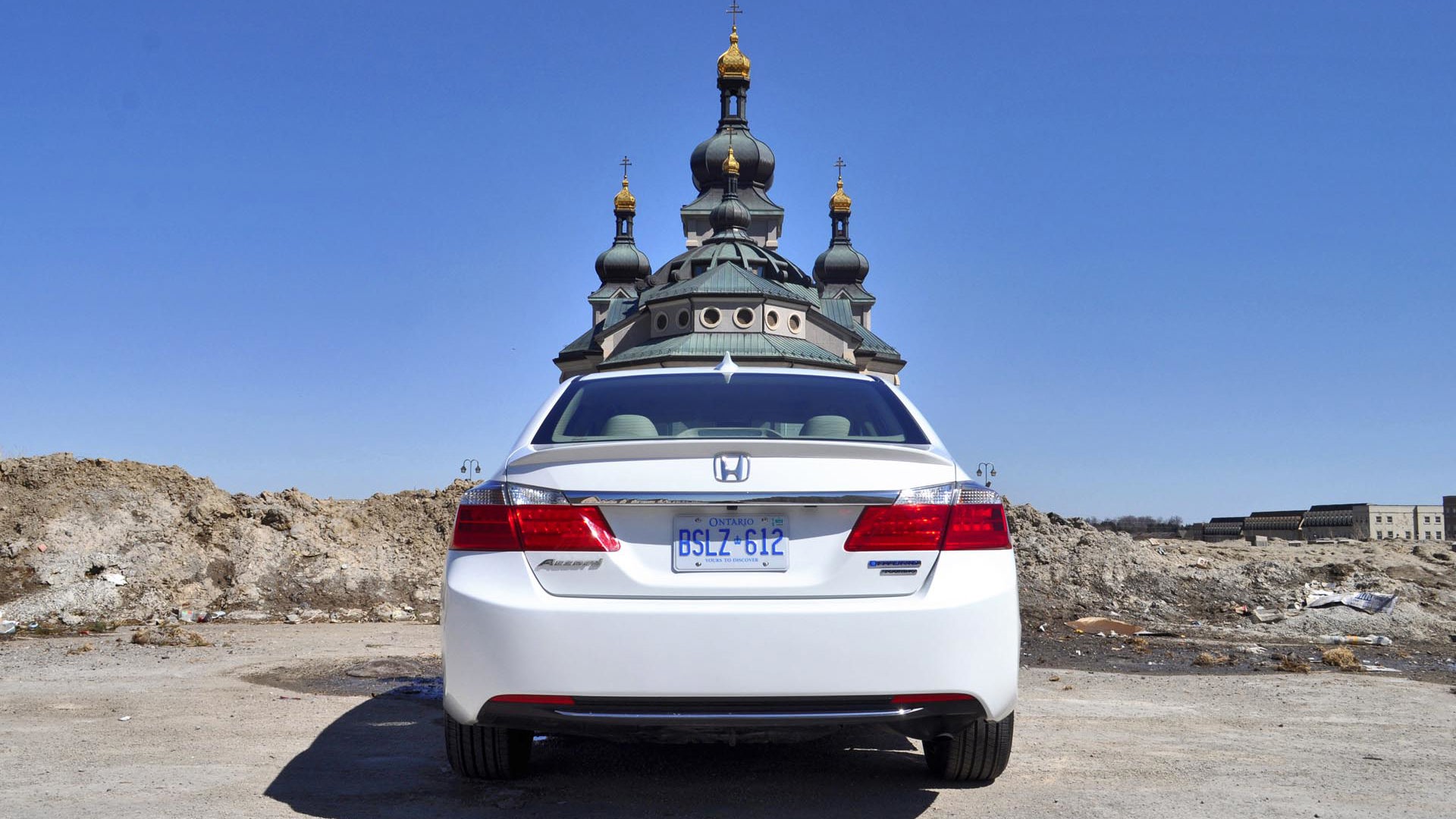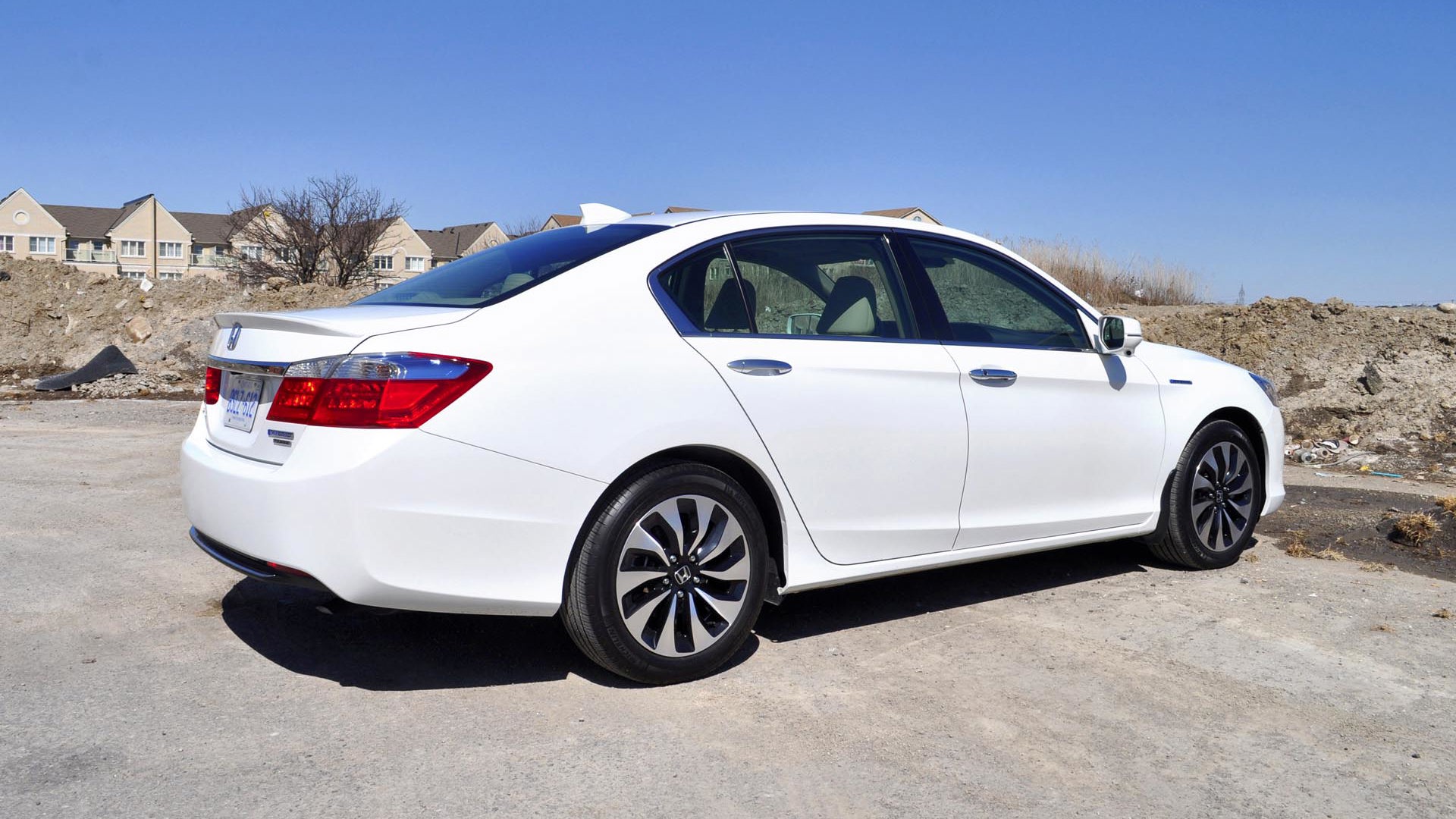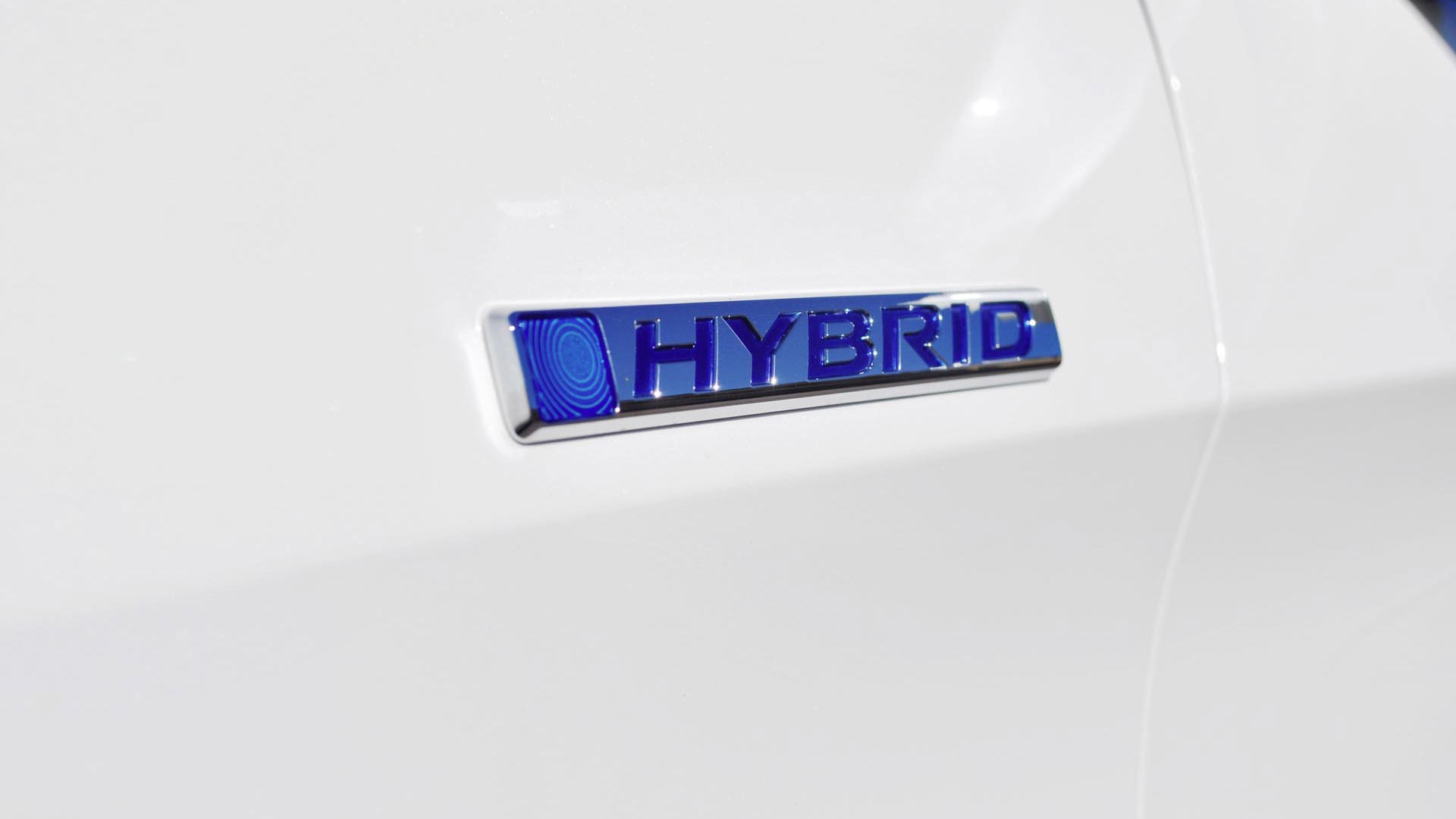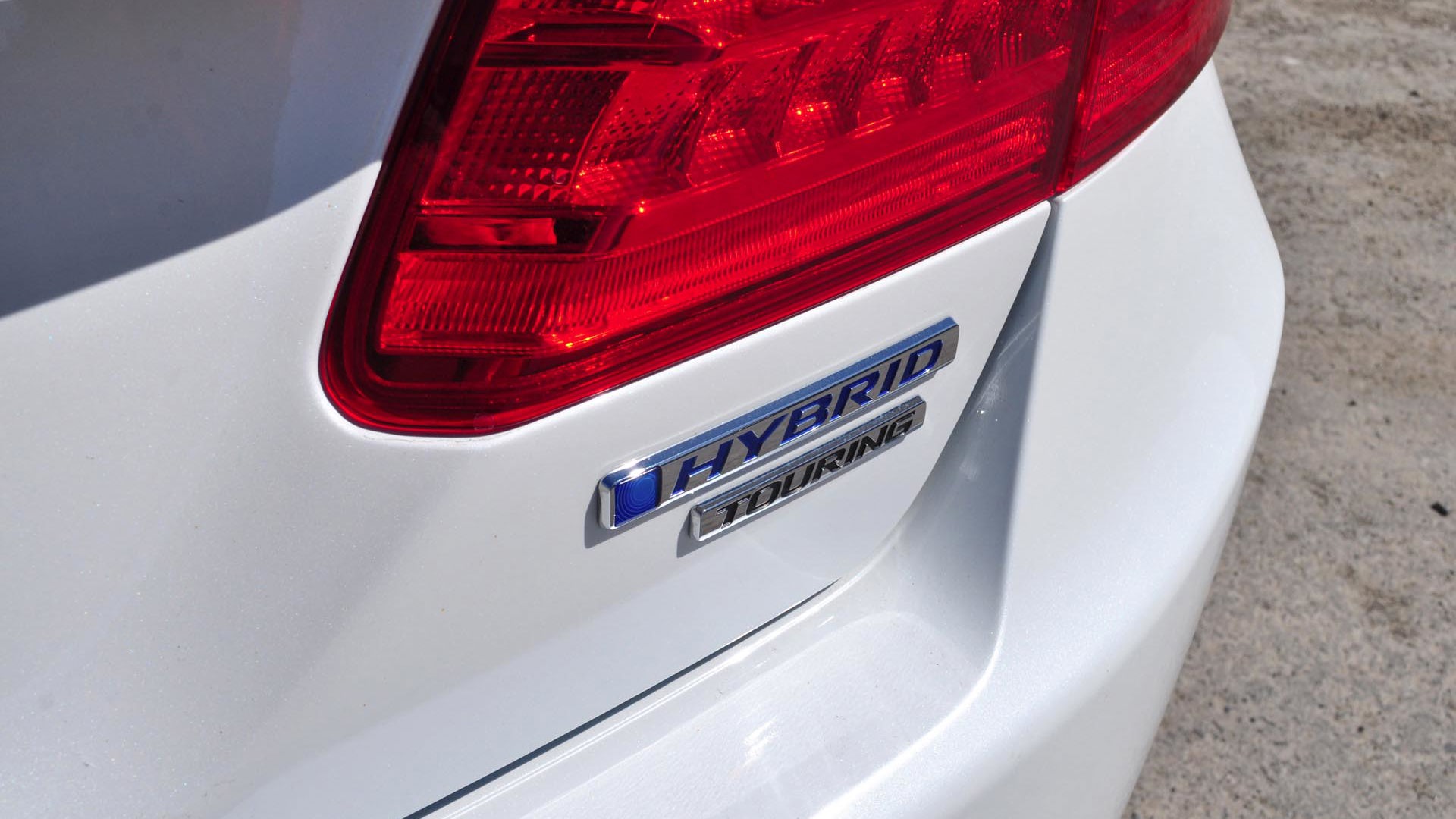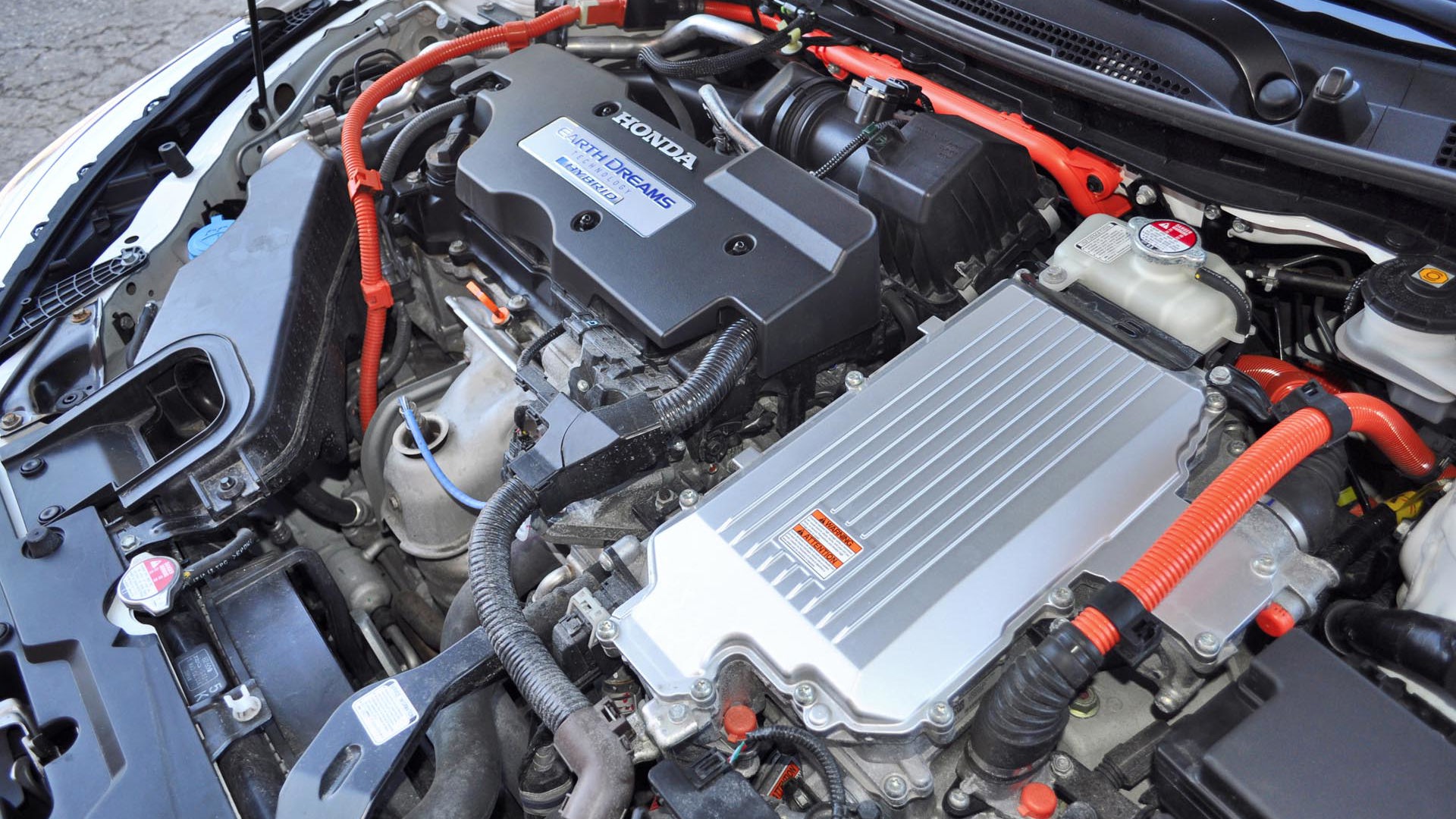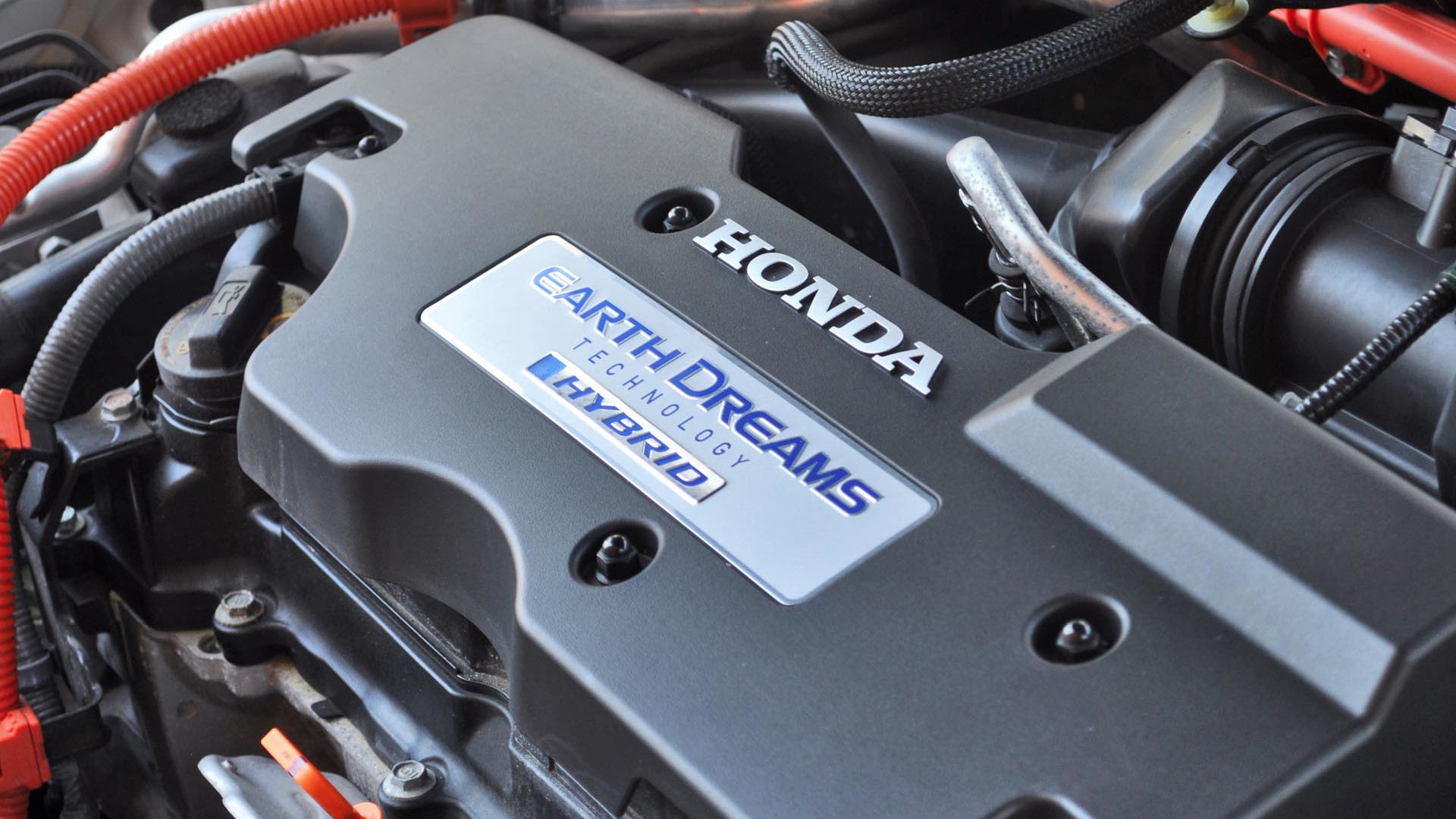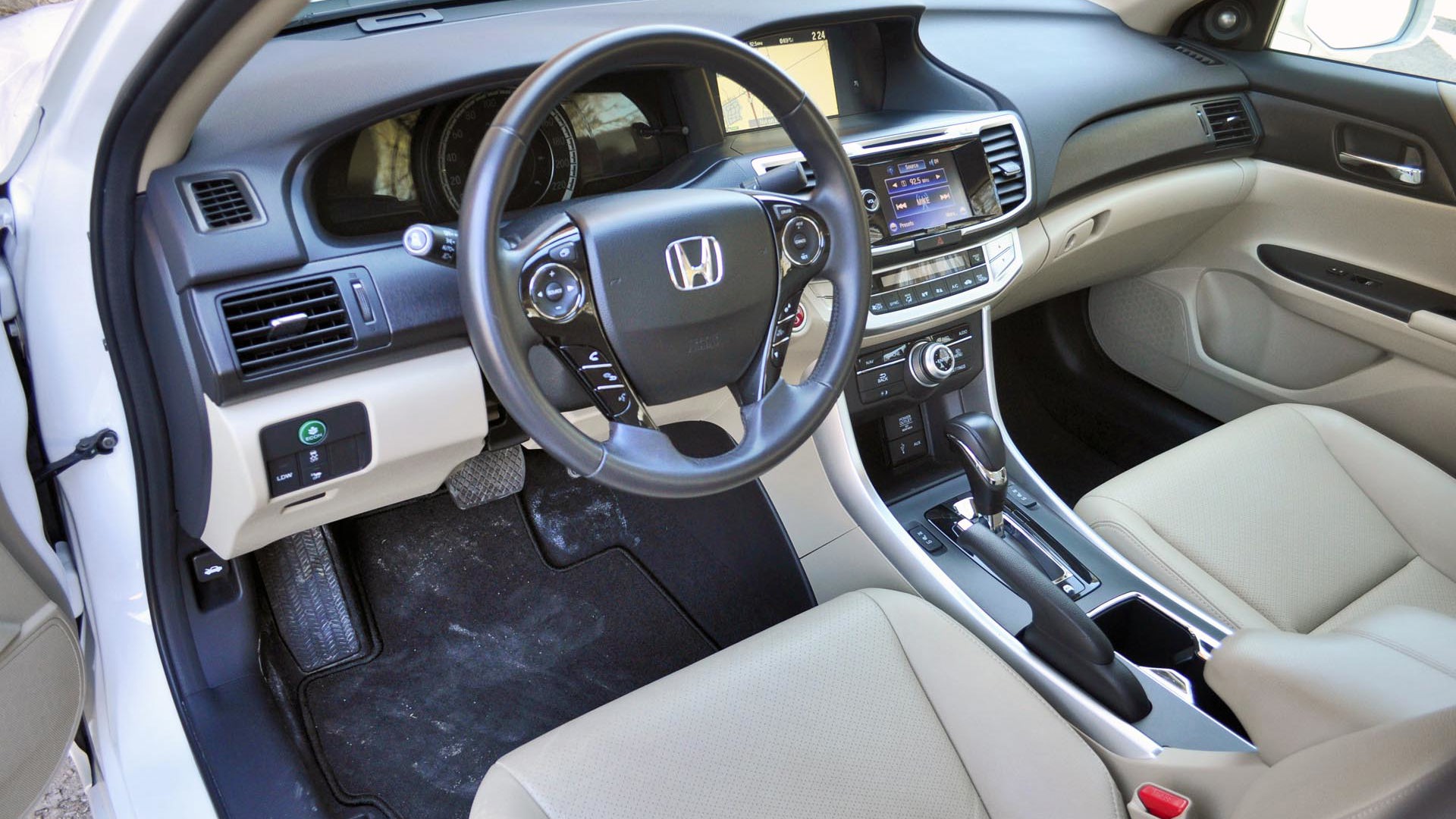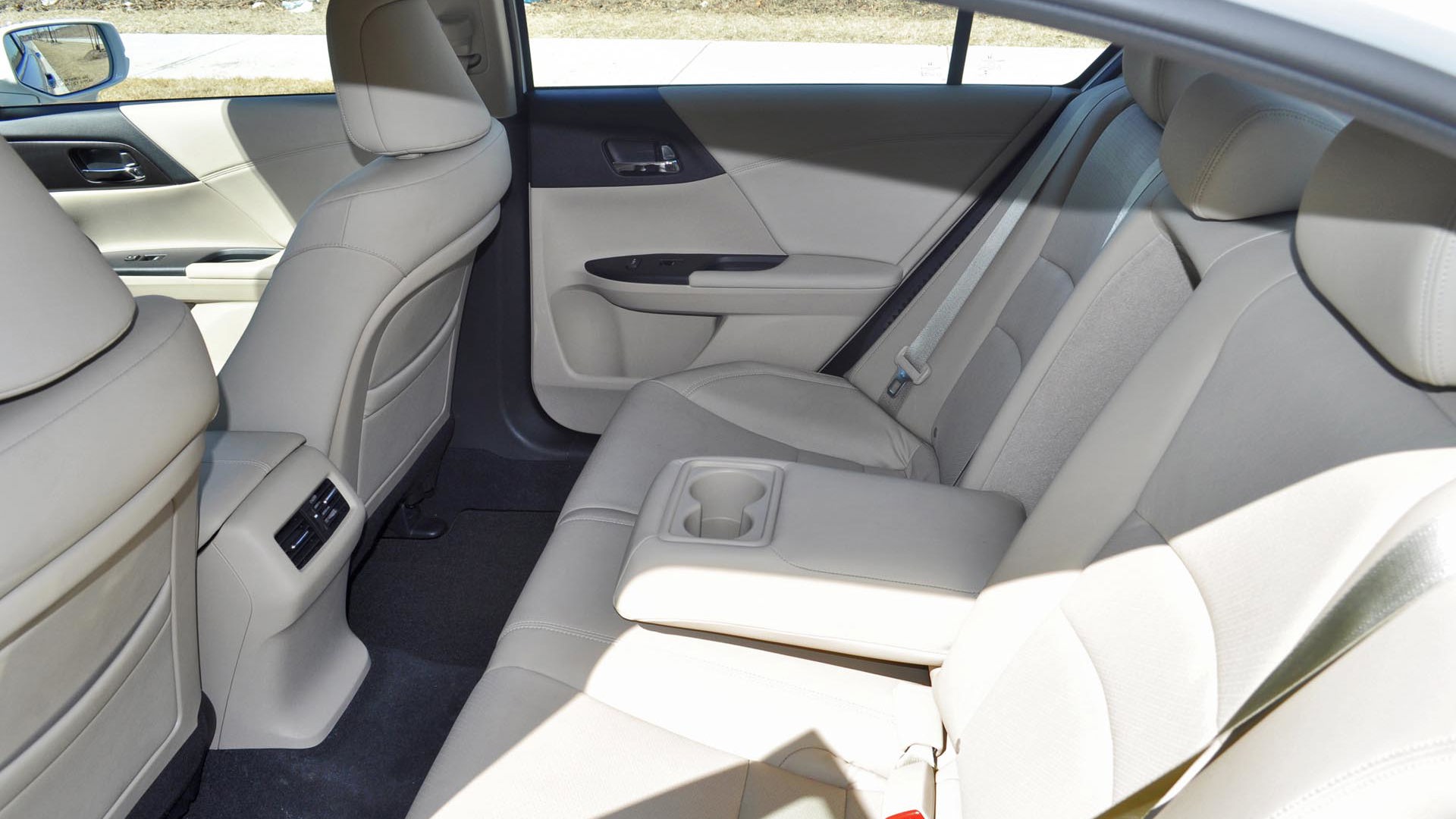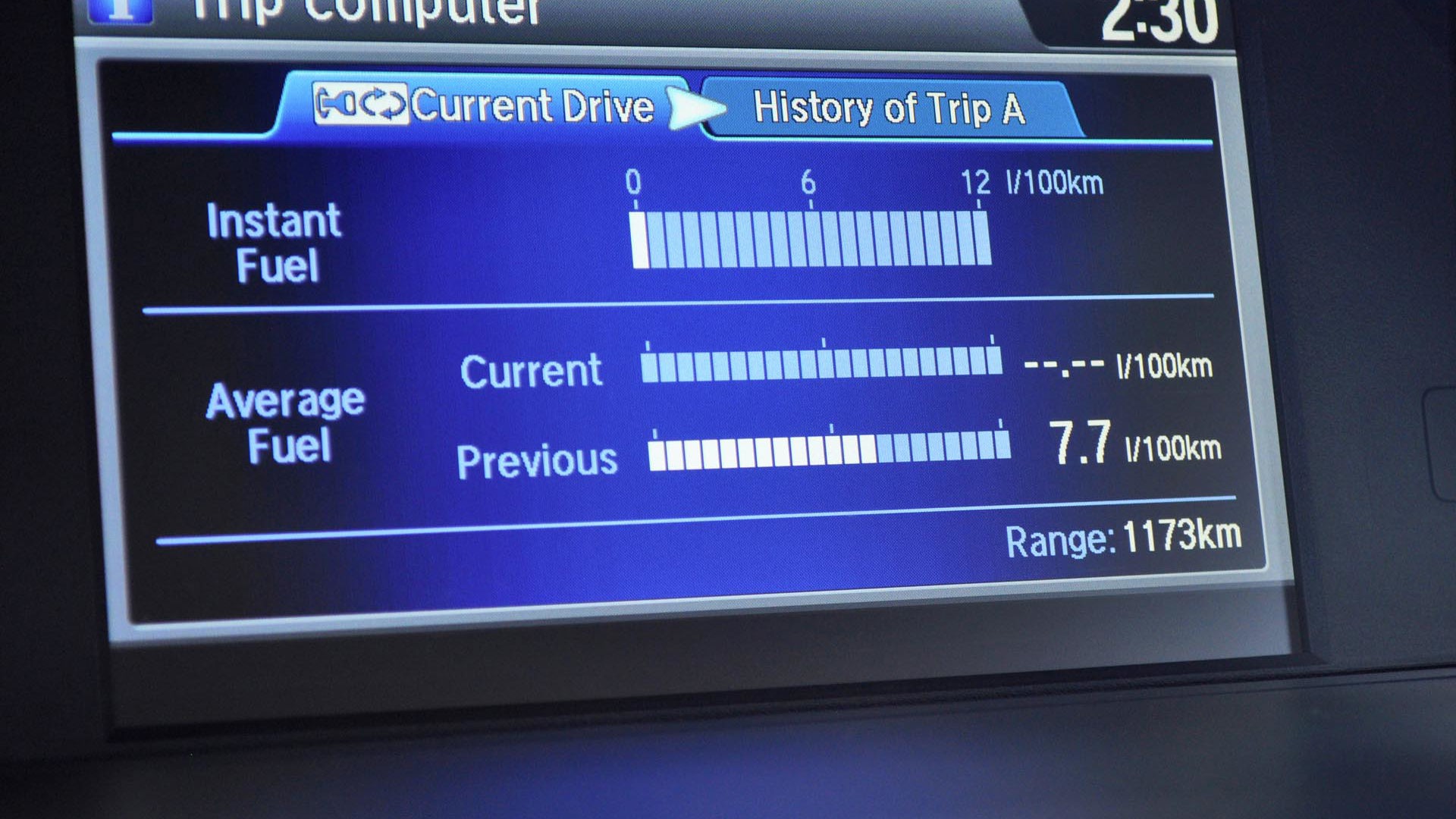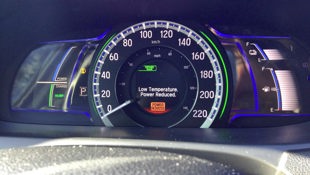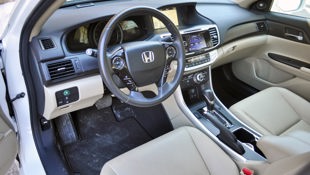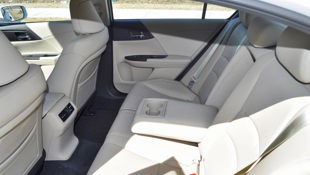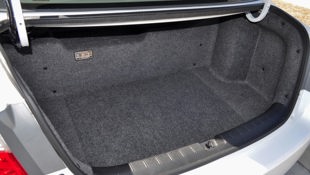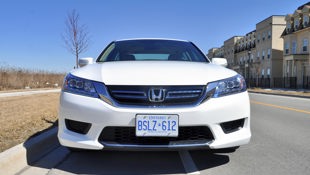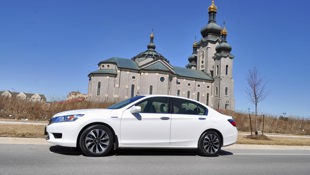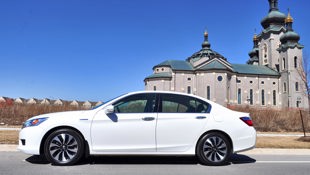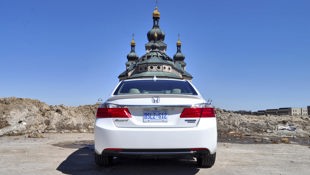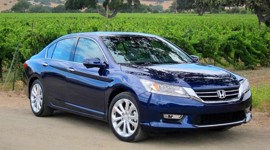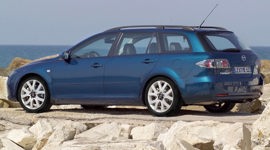 AutoTrader SCORE
AutoTrader SCORE
-
EXTERIOR STYLING7/10
-
INTERIOR8/10
-
PERFORMANCE7/10
-
COMFORT8/10
-
FUEL ECONOMY9/10
There’s a good reason that the Honda Accord Hybrid won the overall 2014 Canadian Green Car award, and was voted the top hybrid again for the 2015 edition: it’s one of the few hybrids on the road so far that uses advanced technology normally reserved for plug-in hybrid buyers at a mainstream sedan price. But it certainly won’t be the last.
With lower gas prices combined with the increased efficiency of ‘regular’ cars, it’s perhaps easier than ever for buyers to ratchet ‘fuel efficiency’ down the list of buying priorities.
With gasoline prices fluttering about at lower levels than last year, plus zero or near zero emissions plug-in vehicles are now taking the overall emissions reductions and tech crowns when it comes to green cars. Hybrid vehicles are in a bit of an SUV-friendly market squeeze. Hybrids save gas compared to regular cars, but more than plug-ins, generally. And with lower gas prices combined with the increased efficiency of ‘regular’ cars, it’s perhaps easier than ever for buyers to ratchet ‘fuel efficiency’ down the list of buying priorities.
But even with higher fuel prices, there was always a strong contingent of Canadians that appreciated serious hybrid efficiency combined with mainstream looks. The Toyota Camry Hybrid was the best-selling hybrid in Canada for years, one of the few countries where that was the case, before the Prius family expanded to multiple models. The gas-electric Camry is still the sales leader amongst electrified hybrid sedans, but Honda’s Accord Hybrid has enough advanced technology not only to beat the Camry Hybrid’s fuel efficiency numbers, but to actually land closer to the dedicated Prius mid-size hybrid’s numbers than anything else in this class.
Wants to be an Electric Car
Designed in parallel with the Accord Hybrid Plug-In, the plug-free Accord Hybrid pares down the battery size and carves out the exterior charging plumbing, but keeps the rest of the advanced technology that maximizes the amount of time it operates in silent electric-only mode. It uses a two-motor system, as well as a generator for low-speed driving, so the car uses gas to generate electricity that’s doled out to the front wheels at city speeds, plus any electricity that the regenerative braking has managed to recapture.
“This vehicle always wants to be an electric car,” said Hayato Mori, product planning manager for Honda Canada, at a technical briefing soon after the car was introduced to Canada for 2014. At city speeds, there’s also no ‘functional transmission’ either, Mori explained, since the electric motor doles out the requested power to the front wheels, the engine turning at varying rates simply to ensure there’s enough electric power to meet the driver’s demands.
It has a lightweight 1.3 kilowatt-hour lithium-ion battery to store its power, similar in design though much smaller than the 6.7 kWh unit in the Honda Accord Hybrid Plug-In, which was never offered for sale in Canada, or anywhere outside California and New York state. The only direct mechanical connection between the Accord Hybrid’s front tires and the engine happens at about 80 km/h, said Mori, when the e-CVT connects the two at the point where gasoline driving is most efficient.
Lift off the gas, and the regeneration starts right away, instead of when the brakes are applied, as on most other hybrids. Once the brake pedal goes down, Honda introduced a unique electric servo-braking system that holds off on using the hydraulic brakes to push the maximum amount of regeneration as possible. Because this could have the strange feel of little resistance at first, Honda has included a system it calls the pedal feel simulator to normalize pedal feel.
At least, that’s the theory. From the driver’s seat, there’s still some lumpiness involved in the brake pedal feel, most often once the actual hydraulic brakes kick in when coming to a stop, but also occasionally at higher speeds, when even pressure on the brake pedal can still come with the odd slight spikes in retardation. This is nothing new in hybrid vehicles, and found in some plug-in ones as well, as the car shifts braking from between regeneration mode of the motor and the actual hydraulic brakes.
But this system, like most hybrid systems to a lesser extent, should help save on brake wear, as the electric motor’s regeneration mode is enough to often brake the vehicle entirely down to about eight km/h, outside of hard or emergency stops, when full hydraulic pressure is used. Where did this system debut? On the Accord Hybrid in Canada, but in reality, said Mori, the Honda Fit EV.
The engine itself is a 2.0L Atkinson-cycle four-cylinder, and with the 124 kilowatt electric motor, puts out a combined 196 hp, that electric motor putting out a total of 226 lb-ft of torque just on its own, while the gas engine helps out with 122 lb-ft. The overall effect on acceleration on the road is not in sports sedan territory, but it’s enough to make the Accord Hybrid a responsive mid-size sedan that’s electric initial oomph does a fairly good impression of a V6, while the fuel consumption numbers suggest closer to subcompact (or mid-size Prius hatchback) efficiency.
Impressive Yet More Realistic Fuel Consumption Numbers for 2015, Though less so in Deep Winter
Speaking of which, a quick look at the official fuel consumption numbers of an Accord Hybrid versus its family sedan rivals shows the effectiveness of all these systems. Though Honda Canada originally quoted a super low average of 3.8 L/100 km when the Accord Hybrid hit the market in 2014, those were using the old and very optimistic Canadian two-cycle fuel efficiency figures. Using the updated five-cycle 2015 figures, it still lands at a very respectable 5.0 L/100 km, which outdoes the Ford Fusion Hybrid, Camry Hybrid and even the Toyota Prius V crossover, the Accord Hybrid landing just above the regular Prius model’s 4.7 figure.
And the upcoming 2016 Chevrolet Malibu Hybrid is said to receive similar drivetrain technology and a fuel efficiency average of 5.0 L/100 km as well, using technology borrowed from the Volt plug-in hybrid.
But though these revised figures may be more realistic, doesn’t mean that you’ll actually achieve them, especially in seriously cold temperatures. With an initial drive of the ’15 Accord Hybrid in February, it was so cold that the EV mode that normally helps drive the Accord Hybrid on battery power alone was rarely functional, never at start up and only rarely once getting up to operating temperatures.
In fact, it actually sent a driver warning about this, saying ‘Low Temperature, Power Reduced’ at start up a few times, though it went away quickly.
My Accord Hybrid’s lifetime display averaged out 7.7 L/100 km, according to the dash display. That same display suggested the Accord Hybrid still offered up a massive range of 1,173 km even at seriously frigid temperatures, though the likelihood of achieving that range with a 60L tank of fuel seems fairly unlikely, no matter what time of year.
For comparison’s sake, the most fuel efficient regular Accord sedan has an official rating of 7.8 L/100 km, with the 2.4L four-cylinder that starts just over $24,000. That’s not a huge stretch from the Accord Hybrid’s starting price of $29,995, especially considering the mid-level equipment on the base Hybrid on top of all the advanced technology. But this tester was the top-line Touring model, which has an MSRP of $36,090, or basically on par with the Accord V6 Touring model.
Similar Features, but Still Some Hybrid Compromises
You’ll be able to tell the Accord Hybrid apart from the much more numerous gas-only models by the blue-tinted upper grille and headlights, unique wheels and of course the badging on the fenders and trunk. Plus there’s a spoiler back there that helps the aerodynamics, but also gives the Hybrid some extra visual kick.
Like any Honda Accord, the Hybrid offers plenty of space for five, a comfortable ride, and a host of family-friendly features as standard: heated seats, proximity key entry, power driver’s seat, rear-view camera and a LaneWatch feature that automatically highlights what’s behind the right side of your car in the large central screen whenever you touch the right turn signal.
Why no similar view on left hand signals? Honda argues you don’t want folks looking right towards the dash when they’re heading left.
The Touring adds niceties like a sunroof, LED front and rear lights, satellite radio, leather seats with heating elements added for the outboard rear passengers, and a navigation system. Plus from safety perspective, it adds a forward collision warning system (FCW), and a lane departure system (LDW), though neither offer the automatic braking or steering capabilities that are starting to appear on other mid-size mainstream sedans.
Outside of the braking, and the luxuriously silent operation when the car is in full EV mode, the Accord Hybrid composes itself very much like a regular Accord from the driver’s seat. Like an old reliable friend, it may not be the life of the party, but there’s a lot to like about the Accord Hybrid’s driving dynamics. The comfortable ride is still there, as is the solidly refined though not totally flat handling around off-ramps. You won’t be looking for twisties in either Accord, unsurprisingly.
A full boot to the accelerator press will bring responsive if not quite scintillating thrust, but in instrumented 0-100 km/h testing done by the Automobile Journalists Association of Canada, the Accord Hybrid was notably quicker than a regular four-cylinder Accord: 8.0 versus 8.7 seconds, respectively. But interestingly, for the 80-120 km/h passing test, the Accord Hybrid’s time of 6.7 seconds was half a second slower than the regular Accord’s, suggesting that even with slightly more overall power than the base four, the extra systems of the Accord Hybrid sometimes results in slight delays in delivering this power while the computer divvies up the electric versus straight-fed engine power to the wheels.
Regarding these acceleration numbers, it’s important to note that these two Accords were not tested side by side in the same year, but when they hit the Canadian market: so 2013 for the regular Accord, and 2014 for the hybrid. As such, there may have been rain or other factors involved here. But the overall personality of the Accord Hybrid is just that: slightly more eccentric than the garden-variety Accord, but with fuel efficiency benefits.
Are there still some practicality compromises that come with mounting a gas-electric drivetrain in a vehicle designed primarily for internal combustion use? Yes, since its lithium-ion battery located just behind the rear seats means the seatbacks don’t fold down, nor even offer a pass-through for skis, sticks or longer items. That’s the case for most if not all hybrid versions of mainstream family sedans, and that’s where a dedicated hybrid like the Toyota Prius or its roomier Prius V has its advantages. The 360 litres worth of space in the trunk in the Accord Hybrid is smaller than in a Civic, and the Touring model offers even less, at 348L.
As such, there is some impressive technology in the Accord Hybrid, but it’s more advanced hybrid than useful family sedan in many ways.
| Warranty: 3 years/60,000 km; 5 years/100,000 km powertrain; 5 years/unlimited distance corrosion perforation; 3 years/unlimited distance 24-hour roadside assistance; 3 years/unlimited distance battery Competitors: |
| Model Tested | 2015 Honda Accord Hybrid Touring |
|---|---|
| Base Price | $36,090 |
| A/C Tax | $100 |
| Destination Fee | $1,695 |
| Price as Tested | $37,885 |
|
Optional Equipment
N/A
|
|
